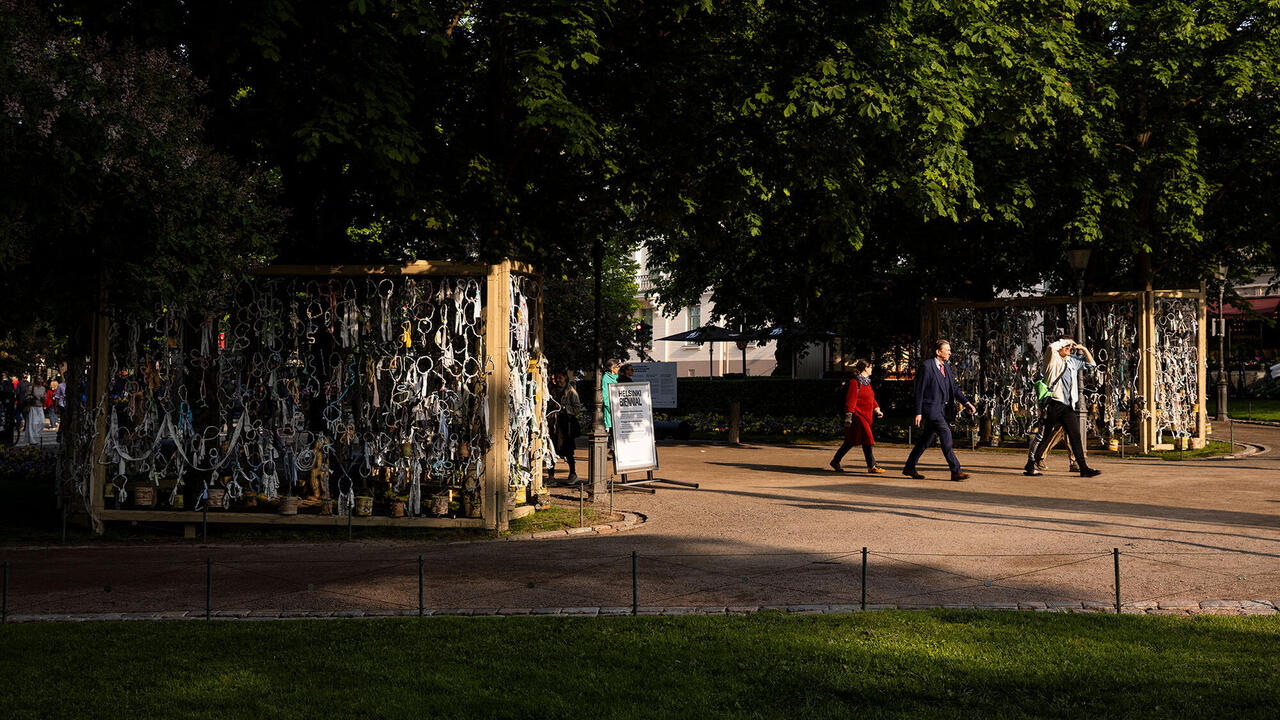Koenraad Dedobbeleer
Mai 36
Mai 36

The twisted humour of Koenraad Dedobbeleer’s second exhibition at Mai 36 was already apparent in its title: ‘Some Material Culture Following a Random Method Based on Aleatory Rules’. Dedobbeleer’s ‘material culture’ is based on the extension and the site-specific re-contextualization of found objects. For example, in a joint show with Rita McBride ‘Tight, Repeating Boredom’ at the Bern Kunsthalle in 2008, he inserted a full-size replica of the roof timbering of his house across several rooms inside the institution. This monumentality was a response to the exhibition space – a response intended to make a stage for the visitors – while the aim in the more modest setting of this gallery show was to create a carefully prepared showcase for the exhibits themselves. Dedobbeleer brought together 16 new pieces (all 2011) whose crowded arrangement seemed to privilege, not the aura of the individual objects, but the staging of a silent dialogue between them.
The classical-looking clay vase in All Modern People Will and the rounded minimalist concrete sculpture Got the Getting are linked and given significance by their mighty marble-laminated plinths. And the spinning wheel in Hobgoblins – albeit missing its wheel – is ironically elevated to the status of a museum piece in the same way. These three works seem to go with the gourd in Attitude Is Literally Defrauding, although its ‘plinth’ is affixed to the wall. The massive plinths turn this group into a strange homage to the history of civilization, from pottery to spinning. The play of references began in the gallery’s closed window display. To the left, the woodcut print A Retrograde Step – showing flat, spiky objects against a pale green ground – evoked an art exhibition. To the right, the artist erected a weighty podium for a chair-like object entitled Resigned Astonishment. Passers-by could have mistaken the gallery for a furniture shop.
However impish, Dedobbeleer focuses on neither punchlines, nor chatty narratives. His works display a persuasive control of form and material. In the spirit of Constantin Brâncus¸i, he welds together three burnished brass vases into a bulbous tower and calls it Smiling Terror, as if he had to apologize to the great master for borrowing an idea from him. Yet there was no need for any apologies since his allusion to the familiar form creates a coherent new one. The same is true of Illusion Is the Competence; the artist hung a reed brush from the ceiling to balance optically with an object on the floor: a reconfigured wooden clothes-rack from the turn of the century, topped off with a large African ladle.
By and large, these transformations were pleasing enough. But the wealth of material on show obscured the weakness of individual works, as did the titles which tried to outsmart the viewer. And even in the wide field of art, the main title’s pleonasm of a chance method based on chance rules is nonsense. Dedobbeleer is held in high esteem, and rightly so. But in Zurich, he made things too easy for himself.
Translated by Nicholas Grindell
















